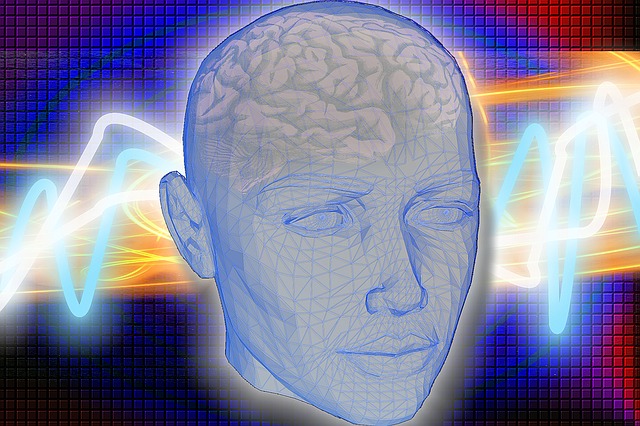
Aloha to All –
We are very pleased to have as our next Dance Wellness guest contributor Judith Lynne Hanna, PhD. Dr. Hanna is a longtime dancer and anthropologist whose work spans many years. Reading reviews of her recently published book, “Learning to Dance: The Brain’s Cognition, Emotion, and Movement”, spurred me to contact her to see if she would write an article for us concerning the new research on dancers’ brains, and how growing up in dance really does change us. The new science of Neuroplasticity (also called brain plasticity, is the process in which your brain’s neural synapses and pathways are altered as an effect of environmental, behavioral, and neural changes) is fascinating – and there are now more than 400 studies related to interdisciplinary neuroscience that reveal the hidden value of dance.
Many of us in the dance world have grown up feeling / knowing that we were somehow “different” from non-dancers, but only recently has science been learning how and why. I found Dr. Hanna’s article to be a clear explanation of all this new research, and am so pleased to share it with you.
Enjoy! (and don’t stop dancing–ever!)
Jan Dunn, MS, Dance Wellness Editor
by Judith Lynne Hanna, PhD
At times during their careers, dancers may want to explain what dance is about to family, friends, students, schools, spectators, and the media. After all, knowledge about dance is new and limited compared to the other arts.
My journey toward understanding dance began as a child in 1946, and the odyssey hasn’t stopped. A pediatrician told my parents that ballet would make my feet strong. So I studied ballet. Dancing didn’t do much for my feet, but dancing has made me stronger physically and mentally. Alicia Markova’s experience with flat feet was different than mine. Critic Clement Crisp reports, “The sublime artist Alicia Markova was taken to ballet as a child because her flat little feet left sad imprints in the sand during a seaside holiday. Ballet, said a doctor, would cure that. And it did. She grew into an astounding artist whose ‘intelligent’ feet and legs were the envy of the ballet world.”
Fascination with dance led me beyond ballet to explore other dance genres (e.g., modern, Afro-Caribbean, Latin American, African, flamenco, Middle East, jazz, hip-hop, swing, ballroom, and folk). Curiosity led me to conduct dance research in villages and cities in Africa and then in theaters, school playgrounds and classrooms, and cabarets in the United States.
As an applied anthropologist I study human behavior, including many forms of dance and culture, past and present, and draw upon the work of different disciplines. I was surprised that at the 2008 annual meeting of the Society for Neuroscience annual meeting, more than 6,800 attendees paid rapt attention to renowned choreographer Mark Morris as he answered questions about the relationship between creativity and dance. Neuroscientists interested in dance? I wanted to know why.
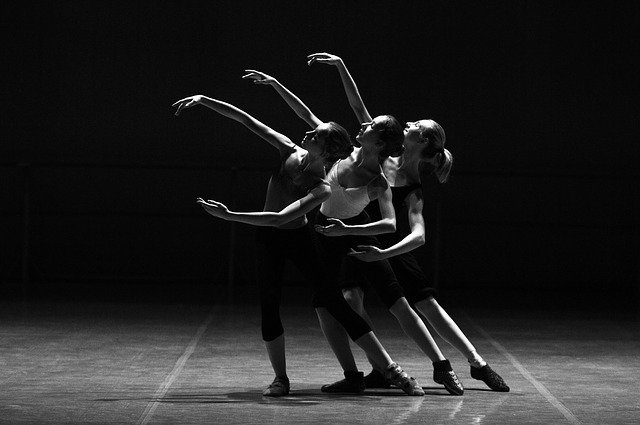
The Attraction of Dance
Scientists are turning to dance because it is a multifaceted activity that can help them demystify how the brain coordinates the body to perform complex, precise movements that express emotion and convey meaning. Dancers possess an extraordinary skill set—coordination of limbs, posture, balance, gesture, facial expression, perception, and action in sequences that create meaning in time and space and with effort. Dancers deal with the relationship between experience and observation.
The brain hides from our sight the wondrously complex operations that underlie the feat of dance. Although there are many secrets to unravel about the power of the brain and dance, advances in technology—29 at my last count, such as brain scanning techniques and the experiments using dancers, dance makers, and dance viewers–reveal to us the unexpected.
Misconceptions that dancers shouldn’t think, just dance, or that dance is merely physical or emotional expression, are challenged by reality. Research shows that dance activity also strongly registers in regions of the brain responsible for cognition. Hidden processes reveal that the brain is choreographer, dancer, and spectator. Dance is what the brain does.
The Choreographing Brain
Brain dominance begins early – 22 days after conception the spinal cord and brain appear. Week 4 the eyes, nose, ear and mouth form. Week 28 thalamic brain connections form to mediate sensory input. The brain is a three pound winked mutable (changeable) mound influenced by lived moving experience, bodily feelings, perceptions, culture, society, and the environment.
The brain is comprised of about 100 billion electrically active neurons (cells), each connected to tens of thousands of its neighbors at perhaps 100 trillion synapses (the spaces between neurons where information transfers can occur). These atoms of thought relay information through voltage spikes that convert into chemical signals to bridge the gap to other neurons.
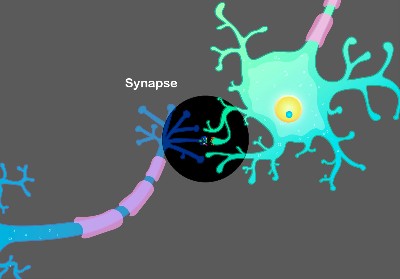
All thought, movement, and sensation emanate from electrical impulses coursing through the brain’s interconnected neurons. When they fire together they connect and reconnect, and the connections between them grow stronger in impacting our perception, our comprehension, and different kinds of memory. (Editors note: Which is where the phrase “what fires together, wires together” comes from.)
Many parts of the brain make a dance
Thinking about dance occurs in the cerebrum, 10 percent of the brain’s mass but with 50 percent of the brain’s neurons. When a person chooses a dance move, it originates in the brain’s motor cortex, which is involved in its planning, control, and execution. Signals from the motor cortex travel down the spinal cord’s 20 million nerve fibers to tell a body part to respond in a certain way. The somatosensory cortex, a mid-region of the brain responsible for motor control, plays a role in eye-hand coordination. The brain’s basal ganglia cells communicate with other brain regions to smoothly coordinate movement and respond to sensory information. The cerebellum integrates input from the brain and spinal cord into planning the movement and contributes to manifesting neural messages into the actual dance move.
More than 400 studies related to interdisciplinary neuroscience reveal the hidden value of dance. For instance, we acquire knowledge and develop cognitively because dance bulks up the brain. Consequently, the brain that “dances” is changed by it. As neuroscientist Antonio Damasio points out, “learning and creating memory are simply the process of chiseling, modeling, shaping, doing, and redoing our individual brain wiring diagrams.”
Dance is a language of physical exercise that sparks new brain cells (neurogenesis) and their connections. We thought that humans had limited brain cells that decreased with age. But now, beginning my eighth decade, I’m still dancing—now flamenco, belly dance, jazz, and salsa!
The neuron connections are responsible for acquiring knowledge and thinking. Dancing stimulates the release of the brain-derived protein neurotropic factor that promotes the growth, maintenance, and plasticity of neurons necessary for learning and memory. Plus, dancing makes some neurons nimble so that they readily wire into the neural network. Neural plasticity is the brain’s remarkable ability to change throughout life.
A language is a method of conveying complex ideas and emotions. It has representations of information, and rules for how the representations can be combined. As a means of conveying ideas and emotions, with or without recourse to sound, dance language draws upon similar places and thought processes in the brain as verbal language. Dance, like verbal language, has vocabulary (locomotion and gestures in dance), grammar or syntax (rules for putting the vocabulary together and justifying how one movement can follow another), and semantics (meaning). Verbal language strings together sequences of words, and dance strings together sequences of movement to make phrases and sentences. Meaning may be story-telling or abstract, playing with form or chance.
Both verbal and dance languages use the same parts of the brain for conceptualization, creativity, and memory. For example, Broca’s area is activated in syntax processing, encoding complex human movements involving their execution, imagination, imitation, and observation. Broca’s area assembles and decodes speech sounds in the same way it interprets body language. The Wernicke area is associated expression and comprehension, understanding meaning, symbolic and analytic functions, sequential information processing, and complex movement patterns.
Dance is enmeshed in verbal language through instructions and directions. But dance feeds the brain in its own kinds of multisensory communication. Dancers and viewers can learn about themselves–including sexual, gender, ethnic, regional, national, and career identities.
Moreover, dance is a means to help us improve mood – it activates dopamine. This chemical operates along neural circuits known as the pleasure pathways, a euphoric rush that engages a learner/ creator/spectator. Dance also helps us cope with stress that can motivate or interfere with concentration and learning.
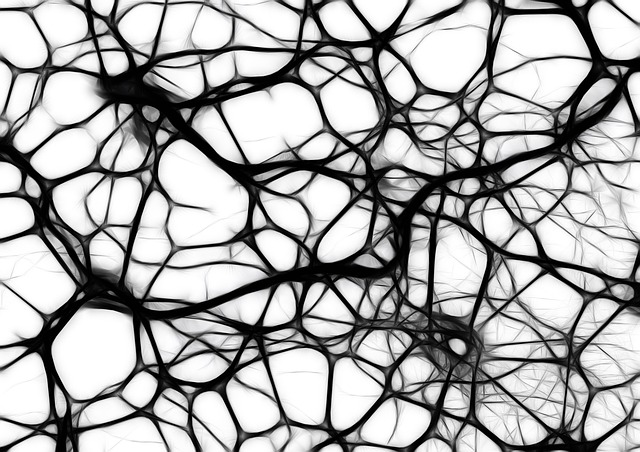
If a pattern is repeated, the associated group of neurons fire together resulting in a new memory, its consolidation, and ease of retrieving it. Neurons can improve intellect, memory, and certain forms of learning if they join the existing neural networks instead of rattling aimlessly around in the brain for a while before dying.
Neuroscientists report the phenomena of mirror neurons that appear to facilitate learning to dance by observation without the benefits of physical practice. A neural resonance exists. When we watch an action and simulate the movement, the same brain network that we use to execute it is active.
Dancers performing a dance and spectators watching a dance both had similar areas of the brain light up. Experienced dancers had more excitability. Mirror neurons seem related to empathy. The process underpins the understanding in student-teacher, dancer-dancer, dancer-choreographer, and dancer-spectator interactions. Mirror neurons may help an individual grasp the intentions and predict the behavior of others.
Connection for Education
The brain sustains different kinds of dance knowledge. Declarative (knowing what dance is), procedural (knowing how to dance), and substantive (knowing ideas and feelings in and through dance) have their places in the brain.
Dancers acquire declarative knowledge about facts, concepts, history, movement vocabulary, and rules for building dances. The brain’s cortex is responsible for thinking and language, perception, nuanced emotions memory, focus, modulating dance movement, and constructing the maps that become the mind, the core self. Dance makers can express declarative knowledge in their choreography. Recalling information leads to reprocessing and restoring.
Procedural knowledge of how to do something one knows is manifest in motor skills, proprioception felt in the body, and cognitive skills and strategies that enable communicating ideas and feelings. Actually dancing, people gain procedural knowledge (“knowing-is-in-the-doing,” bodily or embodied knowledge).
In learning dance motor/cognitive skills, the brain process shifts from a cognitive stage of reflection in learning a procedure through observation or description. Then the brain shifts to working out a method for performing the skill, and then on to a reflexive autonomous stage in which the skill becomes automatic, a learned habit, an unconscious memory. Practicing a movement creates long-term motor learning, colloquially “muscle memory,” “second nature,” performed without conscious effort, and allows the brain to use its energy on something else.
Preliminary knowledge is temporarily stored in the person’s working memory in the brain’s hippocampus. Chunking groups and compresses units of information in memory for efficient recall. Consciousness and chunking allow us to move from dance steps to phrases of steps to a section of a dance and into a shimmering dense web, interlinked by all the myriad patterns we have learned. Rhythm, imagery, mnemonics, and storyline may aid a dancer’s chunking.
Over a period of a few months, the hippocampus gradually shifts the dance knowledge largely to the visual or motor system of the cerebral cortex for permanent storage. There is overlap in brain areas where different types of knowledge or memories are archived. With practice the movements become mapped in the brain, creating what is called muscle memory.
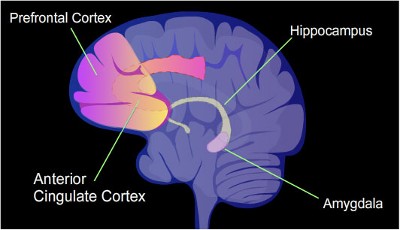
In traditional (blocked) approaches, a learner is encouraged to focus on mastering a particular dance movement before moving on to new ones. By comparison, varied practice (interleaving) that includes frequent changes of task so that the performer is constantly confronting novel components of the to-be-learned information is more effective.
Research about learning a second or third verbal language seems applicable to learning more than one nonverbal language. Children who grow up multilingual have greater brain plasticity, and they multitask more easily. Learning a second or third language uses parts of the brain that knowing only one’s mother tongue doesn’t. Students who learn more than one dance language not only are giving their brains and bodies a workout; they are also increasing their resources for creative dance-making.
Dance can be offered in multiple venues to promote brain growth, including studios, stages, arts magnet schools, academies, regular elementary and secondary schools, universities, and community and recreation centers. Venues may have their own dance faculty. Performing arts organizations, nonprofit operations, and dance companies offer dance education, often as partners with academic schools. Illustrative dance programs, some established in the last century but continuing to develop, show how dance education promotes skills for dance, academe, citizenship, and the workplace.
Obviously curricula and assessment vary in school settings. Dance may be a distinct performing art discipline with in-depth sequential exploration of a coherent body of knowledge guided by highly qualified dance teachers. Or dance may also be a liberal art, complimentary to or part of another subject. Brief introductions to dance may fill gaps in school curricula. Historical serendipity, leadership, teacher interest, parent involvement, and economic resources affect how youngsters experience dance.
Stress and the Brain
Everyone experiences stress at some point in life. Stress occurs when individuals have to cope with demands that require them to function above or below their usual level of activity. Positive stress (eustress – including a dance career and stage fright) is motivating. Chronic stress can harm the brain.
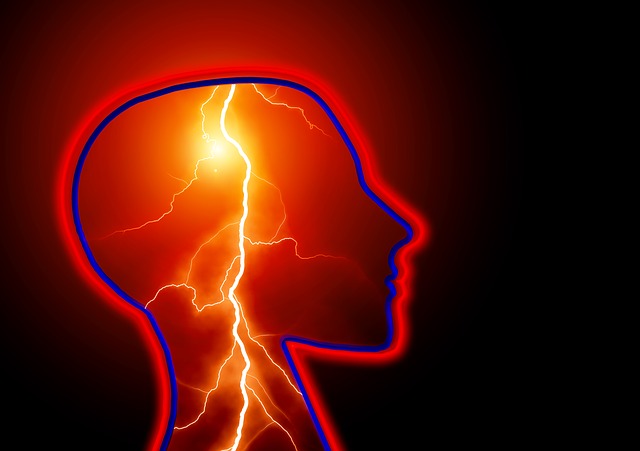
Stress can change the physical structure and function of the brain, affecting wiring and thus performance of one’s activities. Formation of new neural connections in the hippocampus, responsible for encoding new memories, becomes blocked in chronic stress. This blockage hinders the mental flexibility needed to find alternative solutions and negatively affects attention, memory, and other cognitive functions, motivation, and energy. Long-term and also short-term stress, even a mere few hours, can reduce cellular connections in the hippocampus, shrinking it.
Everyday worries and pressures, or the anticipation of a threatening situation, or extraordinary excitement, as well as emergencies, may trigger the stress response. The brain’s amygdala, via the pituitary gland, stimulates the hypothalamus to send a message to adrenal glands that spill out stress hormones. These activate the fight-or-flight response, increasing the production of inflammatory hormones, adrenaline (epinephrine) and cortisol, which work together to speed heart rate, to increase metabolism and blood pressure, to shunt blood way from organs into muscles, lower pain sensitivity, and to enhance attention, all beneficial for survival.
After the body has mobilized for the alarm reaction, and the stressful situation is coped with, the second phase of the stress response kicks in. The adrenal cortex produces anti-inflammatory hormones that limit the extent of inflammation against stressors and return the body to normal. However, when a person is under chronic distress, that fight-or-flight reaction stays turned on and prevents the body from returning to normal. High adrenaline and cortisol levels that persist cause ill health—both physical and cognitive harm.
The Role of Dance in Promoting Brain Health
Dance has been a medium to cope with stress through history and across geographical space. Humans have long held dance as a key tool in their toolkit to resist, reduce, or temporarily escape stress. Dance-stress connections are played out in social life, on theater stages, in the professional dance career, in amateur dance, and through therapeutic interventions.
Dance exercise may lead to increased levels of brain chemicals norepinephrine and endorphins, and dissipate the harmful biochemical elements of energy that can remain in the body when you neither fight nor flee from stress because physical action is impossible. Movements increase blood and oxygen flow to the brain, contributing to alertness, and trigger the chemical brain-derived neurotropic factor that supports the health of young neurons, encourages the growth of new ones, and fortifies connections among neurons.
As exercise plus communication, dance helps us cope with negative stress as a way of knowing, thinking, translating, and interpreting. Going beyond physical movement, dance conveys ideas, feelings, and stories.
Use of the story telling capability of dance is one method to release a person from bad thoughts and behavior. In dance people can recount stressful situations, holding them up for reevaluation and creating versions of the stories in pleasurable ways. Taboo themes can be held up for scrutiny and confronted safely. After all, dance is only pretend, a venue in which to dream oneself anew, even with abstract dances into which meaning can be read by dancer and spectator.
Dance has the potential to help a person overcome negative patterns. The dance reader/teacher/therapist finds a vivid contradictory knowledge or experience to disconfirm and dissolve the past learning. Repetition serves as new learning that rewrites the negative learning.
Moreover, exercise can reduce depression, anxiety disorders, and pain. Altering moods improves mental health, and thus blunts the stress response. Exercise also releases a copious quantity of magical, morphine-like brain chemicals, such as dopamine that evokes pleasure and opiate beta-endorphins that produce feelings of calm, satisfaction, euphoria, and greater tolerance for pain.
Dance may be a kind of stress inoculation. With its need for strength, flexibility, and endurance, dance also promotes fitness. An individual adapts to the increase in heart rate, blood pressure, and stress hormones experienced during dancing, and consequently can better resist stress. So dance to resist, reduce, or escape negative stress and maintain your brain health!
Final Thoughts
Society values mental capacity over physical and emotional expression. Talking, writing, and numbers are the media of value. However, we now know that dance is a multisensory language, brain-driven art, and also, a fuel for learning subjects other than dance. In short, dance is an avenue for thinking, translating, interpreting, and creating. As a multimedia communication that generates new brain cells and their connections, dance at any age enriches one’s cognitive, emotional, and physical development beyond the exercise itself and extends to most facets of life. Influenced by the body senses, environment, culture, and society, the brain “choreographs” dance–and more.
New discoveries about the brain, and especially dancers’ brains, gave impetus to my book Dancing to Learn: The Brain’s Cognition, Emotion, and Movement (2015). It presents a new understanding of dance that is grounded in the recent brain sciences and integrated with knowledge in dance, the arts, humanities, social sciences and education.
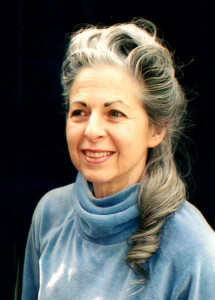
Judith Lynne Hanna, PhD, is Affiliate Research Professor in the Department of Anthropology, University of Maryland, and a dance scholar/critic who gives dance lectures and workshops. She is author of numerous articles and books. See www.judithhanna.com
A Ph.D. in anthropology, from Columbia University, an M.A. in political science from Michigan State University, and a B.A. in political science from UCLA, Hanna has conducted research on education; urban areas; and the meaning of dance in villages and cities in Africa, and theaters, school playgrounds, classrooms, adult entertainment clubs, and neo-burlesque venues in the U.S.
Her books are: To Dance Is Human: A Theory of Nonverbal Communication (University of Chicago Press), Dance, Sex, and Gender (University of Chicago Press), The Performer-Audience Connection: Emotion to Metaphor in Dance and Society (University of Texas Press), Partnering Dance and Education: Intelligent Moves for Changing Times (Human Kinetics Press), Dancing for Health: Conquering and Preventing Stress (Altamira), Disruptive School Behavior: Class, Race, and Culture (Holmes & Meier), Urban Dynamics in Black Africa, co-author (Transaction), Naked Truth: Strip Clubs, Democracy, and a Christian Right, (University of Texas Press), and Dancing to Learn: The Brain’s Cognition, Emotion, and Movement. (Rowman & Littlefield).
Hanna’s more than a hundred articles appear in, e.g., Comparative Urban Research, Current Anthropology, Gender and Culture, Dance Research Journal, The Drama Review, Educational Researcher, Interethnic Communication, Journal of the American Academy of Religion, Journal of Planning Literature, New York Times, Play and Culture Studies, Policy Studies Review, and Washington Post.
Since 1995 she has been an expert court witness on exotic dance 150 cases nationwide.
Her views on exotic dance have been solicited by, for example, The Colbert Report with Stephen Colbert and Bloomberg News. Hanna has lectured at more than 50 colleges and universities, addressed more than 30 association meetings and special conferences and seminars; published her work in Belgium, Brazil, Canada, France, Germany, Jamaica, Netherlands, Poland, Santo Domingo, Sweden, and U.K.; and appeared on radio and television in Canada, Nigeria, Sweden, U.K., and the U.S.





I have long been fascinated by the topic of neural plasticity. Here is the exact book I’ll read to explore it further! I’m very happy that I saw this today!
Awesome summary of how all aspects of the dance combine to manifest the human experience. We are meant and need to move for a lifetime. What a magnificent gift this work is to our time. May we listen with our bodies and minds to create,participate and observe to greater understanding. May dance be a sanctuary and fertile field for embracing our differences and communicating our connections.
We’re happy you saw this too Dianne! Thanks for taking the time to leave a comment.
We were excited to share this piece with readers Janice – thanks for affirming its impact and taking a moment to let us know!